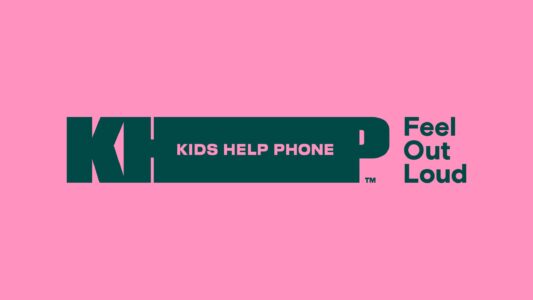

Lesson #2
Belonging & Community (Focus on Diversity)
Focusing on Diversity
The theme of our November assembly is to examine diversity at AD Rundle. At ADR we are committed to striving to live out this statement:
"Building Connection and Compassion Through Community..."
At ADR, we believe in building strong bonds with our students and community is the foundation for successful learning. This philosophy is the cornerstone of our daily interactions and reflects the core values of our staff. Our commitment to our students extends beyond the classroom. We support their families and strive to nurture their social-emotional, physical, and spiritual well-being. By providing a safe space for our students to take risks and grow, we help them to flourish during their time with us.
We understand that middle school is both an exciting and challenging time for young people. At ADR, we are honoured to guide our students through this important phase in their lives and help them transition through adolescence with individual success and confidence firmly rooted in connections and experiences within our school community.
We are honoured to be learning on the unceded traditional territory of the S’ólh Téméxw (Stó:lō) Nation.
But what does this look like at AD Rundle in the classrooms?
Celebrating Diversity
Students Exploring Cultural Heritage
- Objectives: Students will research and present their cultural backgrounds.
- Activities: Cultural presentations, creating heritage boards, group discussions.
- UDL Strategies: Multiple means of engagement (personal stories, multimedia).
- How does this relate to our Remembrance Day observances?
- Objective: Students will reflect on what they learned about diversity and create action plans to promote inclusivity.
- Activities: Reflection essays, group discussions, diversity projects.
- UDL Strategies: Multiple means of engagement and expression (writing, discussion, project-based learning).
Core Competencies:
Fitting-In Versus Belonging
Fitting-In Versus Belonging
Fitting-In Versus Belonging
This reminded me of researcher/author Brene Brown’s findings on belonging versus fitting in. In her book Rising Strong, Brene shares how middle school students described the difference between belonging and fitting it. Here’s what they said:
Fitting-In: when you want to be a part of something but others may or may not want you to be
Belonging: when you want to be a part of something and you feel welcome
https://jessicaspeer.com/2019/03/26/belonging-vs-fitting-in-at-schooland-at-home/
Anti-Racism: Students (ERASE-https://www2.gov.bc.ca/gov/content/erase/diversity-and-inclusion/anti-racism#students)
What is racism?
Racism means thinking that some people are better than others because of the colour of their skin, race, cultural identity, or ethnicity. Racism happens when people are treated unfairly based on their race or ancestry, either by individuals, groups of people, or by larger systems.
We don’t want racism or discrimination anywhere in our schools or communities, but we know it still happens. Everyone’s culture, race, and ancestry are important, and schools should be places of respect and belonging where everyone feels included, valued, and proud of who they are.
Students-Take Action
It is important to understand the impacts of Canada’s history of colonialism and racism. We need to listen to and learn from people who have experienced or are experiencing racism and work together to create a culture of belonging for all students and staff. All school districts in B.C. must have codes of conduct, and independent school authorities must have policies against racism and discrimination that follow the B.C. Human Rights Code.
We all can take action against racism and make our communities better for everyone. It is not enough to be “not racist”. We need to be anti-racist and speak up against racism.
Don’t ignore it. If you witness or experience racism or hate, take it seriously and report it or ask for help. If it’s urgent, call 911.
If it’s not urgent, you can report racism or ask for help by using other tools, including:
- erase Report It tool
- Tell a trusted adult what happened. If you feel unheard or ignored, tell another trusted adult what happened.
- Call the non-emergency number for your local police
Reflect. Consider your beliefs, values, and identity. Look around you to see where racism exists and how it’s being upheld or permitted. Recognize, consider, and work to shift your own attitudes, beliefs, and biases that may be racist or discriminatory.
Listen to people’s experiences of racism without judgment. We need to understand how racism affects people to improve things.
Understand privilege. Consider what privilege you hold and how you might benefit from your privilege. Consider how others may not hold the same privilege as you. Reflect on how privilege may create advantages for some people and disadvantages others. Reflect on how you can support a more equitable environment within your school community. We can all learn, change and grow.
Admit mistakes. It’s okay to make mistakes. Everyone makes mistakes sometimes. When you realize you've made a mistake, acknowledge it and learn from it to change how you act moving forward.
Learn about racism from different perspectives. Read books, watch movies, listen to podcasts, listen respectfully when people share their lived experiences of racism, and participate in conversations about it. Share what you learn with others.
Talk openly and respectfully. Have respectful and honest discussions about racism and diversity. Listen carefully when people share their perspectives and experiences. Be non-judgemental in the ways you communicate. Respectful conversations will help to develop a meaningful understanding of issues and concerns with racism.
Get involved in anti-racism work in your school or community. Find out what you can do to support an anti-racist society and make a positive difference.
https://www2.gov.bc.ca/gov/content/erase/diversity-and-inclusion/anti-racism#students
Anti-Racism: Adults (https://www2.gov.bc.ca/gov/content/erase/diversity-and-inclusion/anti-racism#students)
How does racism affect students at school:
Racism has a significant impact on young people because they are still growing and learning about the world and how they fit into it. Racialized youth share that:
- They might not get the same chances or resources as others
- They often face or witness unfair discriminatory treatment, including microaggressions, and sometimes don't feel heard when they speak up about it
- They don’t often see themselves represented in pictures, media and school materials
- They want to see more teachers, school leaders, and school staff who are racialize and understand their lived and living experiences of racism
Racism exists and it is a problem. There is no place for racism or discrimination in schools. Racism contributes to a decreased sense of well-being, increased stress, and has an impact on mental health, which can lead to thoughts or attempts of self-harm or suicide. It is essential that all people who participate in B.C.’s education system work together to ensure school communities are anti-racist and non-discriminatory. Everyone deserves to learn in an environment of respect and belonging, and feel a sense of well-being and safety at school.
Microaggressions are seemingly subtle but hurtful actions or comments that can have negative impacts on racialized students, whether intentional or unintentional. At school, examples of microaggressions may include:
- Pronouncing someone’s name incorrectly, even after they’ve corrected you
- Ignoring important holidays or traditions from someone’s religion or culture
- Assuming things about someone because of how they look
- Making negative or judgemental comments about someone’s food or traditions
Individual racism, also known as interpersonal racism, is when someone thinks or acts in racist ways. Individual racism is learned and reinforced by systemic racism. It is based on one’s assumptions, beliefs or behaviours that have been learned and reinforced by systemic racism. Individual racism can be intentional or unintentional. Examples include racial slurs, hate speech, and telling racist jokes.
Systemic racism, also known as institutional racism, is the way our society is set up to support unfair advantages to some groups of people and reinforce disadvantages to other groups of people based on their race, religion, or cultural values. People sometimes uphold systemic racism without realizing it. It’s important to understand the impacts of colonialism and how being part of these systems can be racist. We all have shared responsibilities in combating racism in Canada to create a more inclusive and anti-racist society.
Privilege means having special rights, benefits, or advantages that are provided to some groups of people based on their race, ethnicity, socio-economic status, gender and other aspect of identity. Privilege benefits some groups of people while actively marginalizing or disadvantaging individuals that do not have the same circumstances.
White privilege means people representing white dominant culture have benefits and face fewer barriers because of the colour of their skin. It doesn’t mean that white people don’t have problems or hardship, but that the colour of their skin does not add to their problems. It is important to recognize that racialized people face more barriers in society than people with white privilege. To make society more equitable for everyone, we need to address systemic racism, and understand and change our policies, culture, and behaviours.
Intersectionality is about how different parts of who we are, like our race, culture, gender, or sexual orientation, impact our experiences. Just like a bicycle wheel, each person is made up of different spokes that combine to make a whole individual. Everyone is unique.
Biases are like shortcuts your brain takes when making assumptions or decisions about people or situations. Biases are based on your experiences, background, and even things you've seen in the media and can affect how you think and act without you even realizing it. They can lead you to unfairly judge or treat people based on factors like their race, gender, or appearance. Everyone has biases, and it's important to recognize them and try to overcome them to treat everyone fairly.
You can make a big difference by having conversations with young people about diversity. Here's how:
Model. Show children how to treat people in respectful ways by being non-judgmental, non-discriminatory and respectful to others. Children often watch and copy the behaviour of adults in their lives.
- Share stories. Read books together that reflect cultural diversity and how being kind and open is important
- Talk with children. Start conversations about racism and keep them going. Have open and respectful conversations where children share about their experiences at school or in the community or ask questions about cultures and traditions that are different than theirs. It's important to listen and help them understand the world around them
Human Rights-Discrimination Based on Gender, Sex, Sexual Orientation, Gender Identity/Expression
All people have the right to be free from discrimination based on sex, gender, sexual orientation, gender identity and gender expression. This right is protected by Article 2 of the UN Convention on the Rights of the Child, as well as in the Canadian Charter of Rights and Freedoms, the Canadian Human Rights Acts, and the B.C. Human Rights Code.
The B.C. Human Rights Code protects B.C. students from discrimination based on Indigenous identity, race, colour, ancestry, place of origin, religion, marital status, family status, physical or mental disability, sex, sexual orientation, gender identity or expression, or age.
Every school in B.C. should be a place where every student feels welcome, safe and included.
https://www2.gov.bc.ca/gov/content/erase/diversity-and-inclusion/anti-racism#students




